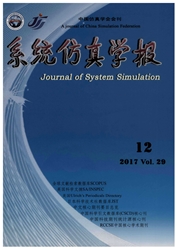

 中文摘要:
中文摘要:
在现有分布式仿真应用中,基本上没有使用HLA中的时间管理服务。其根本原因是HLA中逻辑时间的本质是具有语义的仿真时间,这给分布式仿真带来了性能减低、互操作性差等问题。为了解决这些问题,引入了与语义分离的因果时间的概念,用于确定消息间的因果关系,并为分布式仿真构建新的体系结构(称为Multi-Layer Architecture,MLA),其中的支撑平台是消息传输支撑平台(Message Transport Infrastructure,MTI)。在MLA中,因果时间封装在MTI中,相对于联盟完全透明;而位于联盟中的仿真时间是一个整体,在联盟构建过程中决定采用哪种仿真时间管理策略。基于因果时间与仿真时间的分离,MLA能够对仿真数据进行多层封装和拆封,完全更新了联盟执行过程。MLA不仅有利于提高仿真应用的并行,还能够增加仿真模型的可重用性和互操作,而且可以使模型与不断进化的标准相适应。
 英文摘要:
英文摘要:
In the current distributed simulation applications, the time management in HLA is used rarely. The basic reason is pointed out that the logical time in HLA is simulation time with semantic in nature, which brings distributed simulation some disadvantages, such as low performance and hardly interoperatility. To solve these question, the causal time without semantic was introduced to ascertain the causality between messages, and the architecture (Multi-Layer Architecture, MLA named in the paper)for distributed simulation was put forward whose infrastructure is named Message Transport Infrastructure (MTI). In MLA, causal time encapsulated in MTI is transparent to federation, and simulation time in federation as a whole can be chosen at will. Based on the method dividing the causal time and simulation time, MLA enables the information encapsulation and anti-encapsulation between the different levels, and improves the federation execution process. The MLA can help to advance the concurrence between simulation applications, increase the reusability and interoperability between simulation models, and reduce the models exposure to evolving standards.
 同期刊论文项目
同期刊论文项目
 同项目期刊论文
同项目期刊论文
 期刊信息
期刊信息
